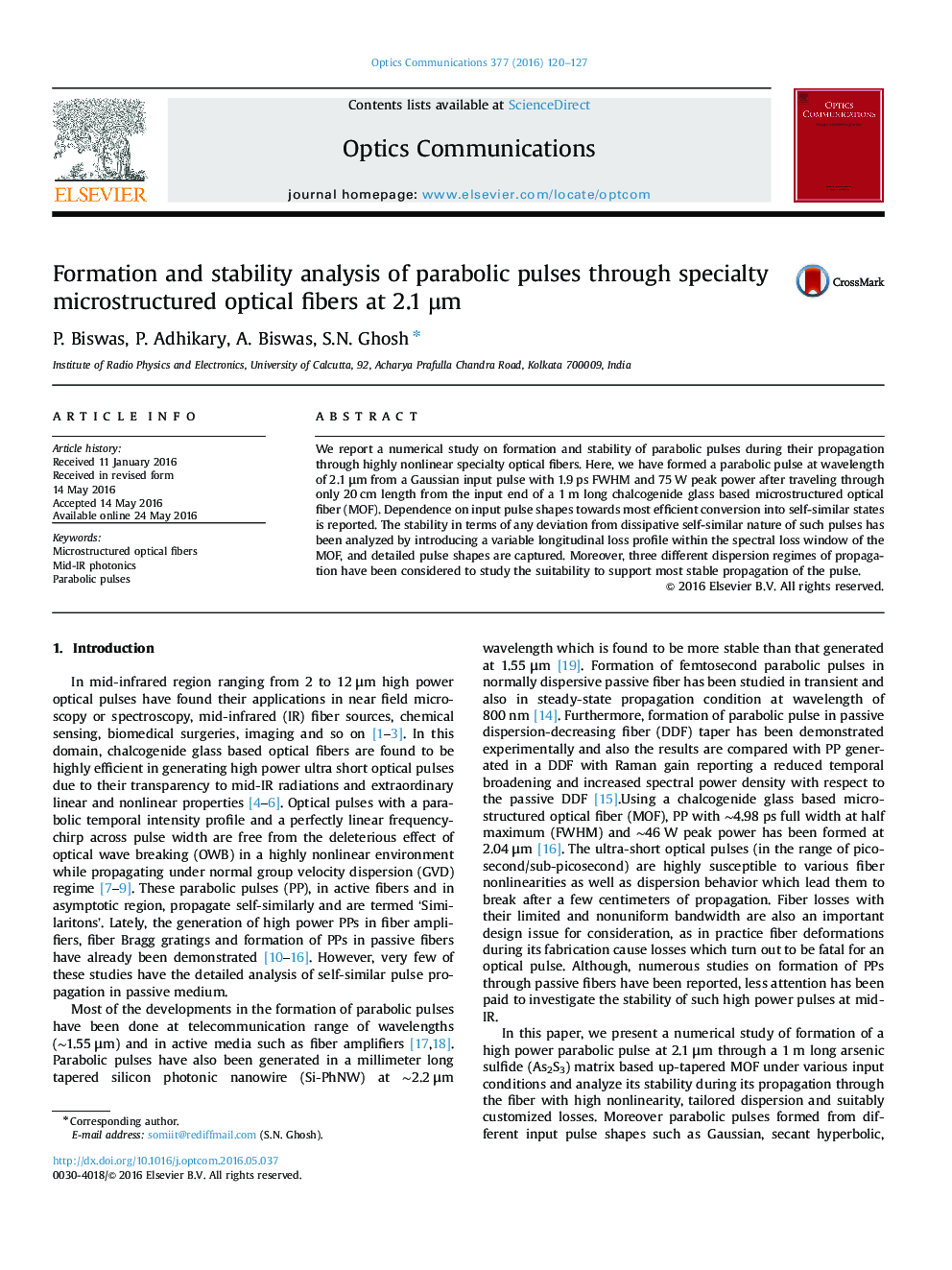| Article ID | Journal | Published Year | Pages | File Type |
|---|---|---|---|---|
| 1533146 | Optics Communications | 2016 | 8 Pages |
•High power parabolic pulses are formed at 2.1 μm wavelength in As2S3 glass based MOF.•Significant dependence of parabolic pulse formation on input pulse shapes is reported.•Effect of customized loss profiles on 3-dB spectral bandwidth and energy is computed.•Formed parabolic pulses are confirmed as transient states of certain pulse evolutions.•Evolution of transient states merely dependent on longitudinal dispersion profiles.
We report a numerical study on formation and stability of parabolic pulses during their propagation through highly nonlinear specialty optical fibers. Here, we have formed a parabolic pulse at wavelength of 2.1 μm from a Gaussian input pulse with 1.9 ps FWHM and 75 W peak power after traveling through only 20 cm length from the input end of a 1 m long chalcogenide glass based microstructured optical fiber (MOF). Dependence on input pulse shapes towards most efficient conversion into self-similar states is reported. The stability in terms of any deviation from dissipative self-similar nature of such pulses has been analyzed by introducing a variable longitudinal loss profile within the spectral loss window of the MOF, and detailed pulse shapes are captured. Moreover, three different dispersion regimes of propagation have been considered to study the suitability to support most stable propagation of the pulse.
